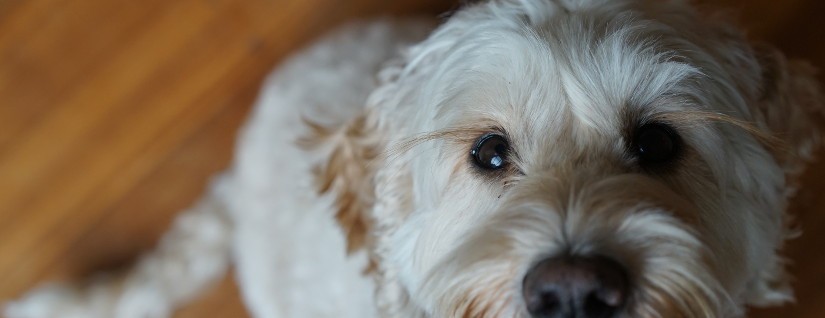Imagine you extend your hand to greet someone or attempt to hug a friend and they slap you in the face. You’d be pretty shocked and probably at a loss why your friendly overtures caused such a violent response. Or could you imagine engaging in such brutal behaviour yourself? I don’t know of any culture where this response to a sociable approach would be acceptable. There’s no problem though when it comes to human-dog greetings. It is still fairly common practise for humans to respond to a friendly dog greeting with slapping, kicking, pushing or other crass antics. From our dogs’ point of view surely this must seem worse than just violating the dog greeting etiquette. They must think we are truly mad.
Dogs need support, not sabotage
It certainly appears crazy to alienate precisely those animals that we most expect to be friendly and free of aggression. We have extremely high standards when it comes to the behaviour of pet dogs but at the same time we sabotage them at every turn. Lucky for us, dogs are immensely adaptable. The close dog-human collaboration has worked over so many tens of thousands of years not because humans are so uniquely clever but to a large extent because dogs are such amazingly successful survivors.
Jump with your dog, for joy
So here we are in the 21. century – modern, advanced, educated humans – and we still stick to those appalling methods for stopping our dogs from jumping up and licking us in the face. It is understandable that not everyone enjoys having a wet dog nose, let alone tongue, slobbering across their face and being jumped on can be very unpleasant if not dangerous. But there is absolutely no reason to respond to a friendly greeting with violence. Jumping up and licking faces are pro-social dog behaviours. You might not experience it as such, but it really is a good sign if your dog behaves that way. A reason to celebrate in fact, since it means your dog likes humans rather than being fearful of or aggressive towards them. Yay!
How to greet a dog and keep face
Our mismatched greeting ritual is an example of the culture clash* that exists between dogs and humans. The question is how can we turn our response into a more socially acceptable form for the dog and at the same time prevent ourselves from bruises and scratches, muddied jeans and slobbered faces. With a bit of effort this is very achievable. As a pre-requisite, your dog first needs a solid, reliable “sit-stay” under distraction. If you think your dog already knows how to sit, think again. Teaching your dog to put their butt on the ground is one thing. Staying in that position while you jump up and down on the couch is another. Can your dog pull that off? If so, congratulations! If not, get to work and have some fun. Ask your dog to sit, then take a step, left, right or back, and promptly reward your dog for staying in the sit position (if the dog gets up, start over). Try different distractions and increase the difficulty gradually so your dog can succeed. Jumping around on the couch is optional of course, but you want to proof your dog’s sit-stay simulating the excitement that may arise when good friends come over for a dinner party. If you need help, contact a good dog trainer** or get yourself a decent dog training book***. Once your dog is good at sit stay, practise with friends and instruct them to ask your dog to sit upon greeting. The dog’s reward could be access to the person, which is what dog was after in the first place. For example the person may crouch or bend down and pet the dog. Treats, tossing a toy, throwing a ball or whatever the dog enjoys are other options for reinforcement. If you take it step by step, you can build very reliable behaviours without being rude or violent with your dog.
The “instant solution” temptation: don’t risk it
If you are still thinking “why can’t I just whack the dog once and be done with it”, consider the ramifications. Yes, if you hurt or scare the dog enough, they might never jump up on you or another person. But imagine what the shock of being met with such force just for trying to be friendly does to your dog. They might become wary of you or people in general, they might flinch at quick hand movements, become anxious and withdrawn, maybe even aggressive. Why would you risk compromising the relationship between you and your dog and put a damper on your dog’s happiness if you can solve the problem in a cooperative and risk-free way.
Slowly but surely we learn some manners
Stepping away from tradition and breaking habits is never easy and dog training is no different. If even a veterinarian advices a client to whack her dog under the chin in response to jumping up, we have much education to do before things change for the better. The woman who received this advice and “successfully” tried it on her dog promptly passed it on to other people at the dog park. I could not help but notice that her dog was anxious and shied away from people’s outstretched hands. I have no proof that this was the result of aversive handling but, considering everything we know today about dog behaviour, it’s very possible. This type of advice given by a vet who apparently overstepped his field of expertise (no respectable dog trainer would ever give canine medical advice to a client) is not the worst example. Even in some dog training schools they still teach you anything from violently jerking the leash to a well-timed swing with a frying pan (I’m not kidding). Anything goes it seems to let our dogs know just how offended we are by their friendly greeting rituals. I think we can do better. Let’s turn the tables for once and show our dogs that we have some manners.
RESOURCES
*The Culture Clash, award winning book by Jean Donaldson, is a must read for anyone who is involved with dogs.
**Crosspaws – recommended dog training books.
***Crosspaws – How to chose a dog trainer.
 Copyright secured by Digiprove © 2015 Sylvie Martin
Copyright secured by Digiprove © 2015 Sylvie Martin 

Sylvie, your jumping article is priceless! Thank you so much for explaining to people how the dog actually views their behavior! May I share with clients if I give you credit?
Regards,
Kathi O’Malley
Thanks Kathi, feel free to share!